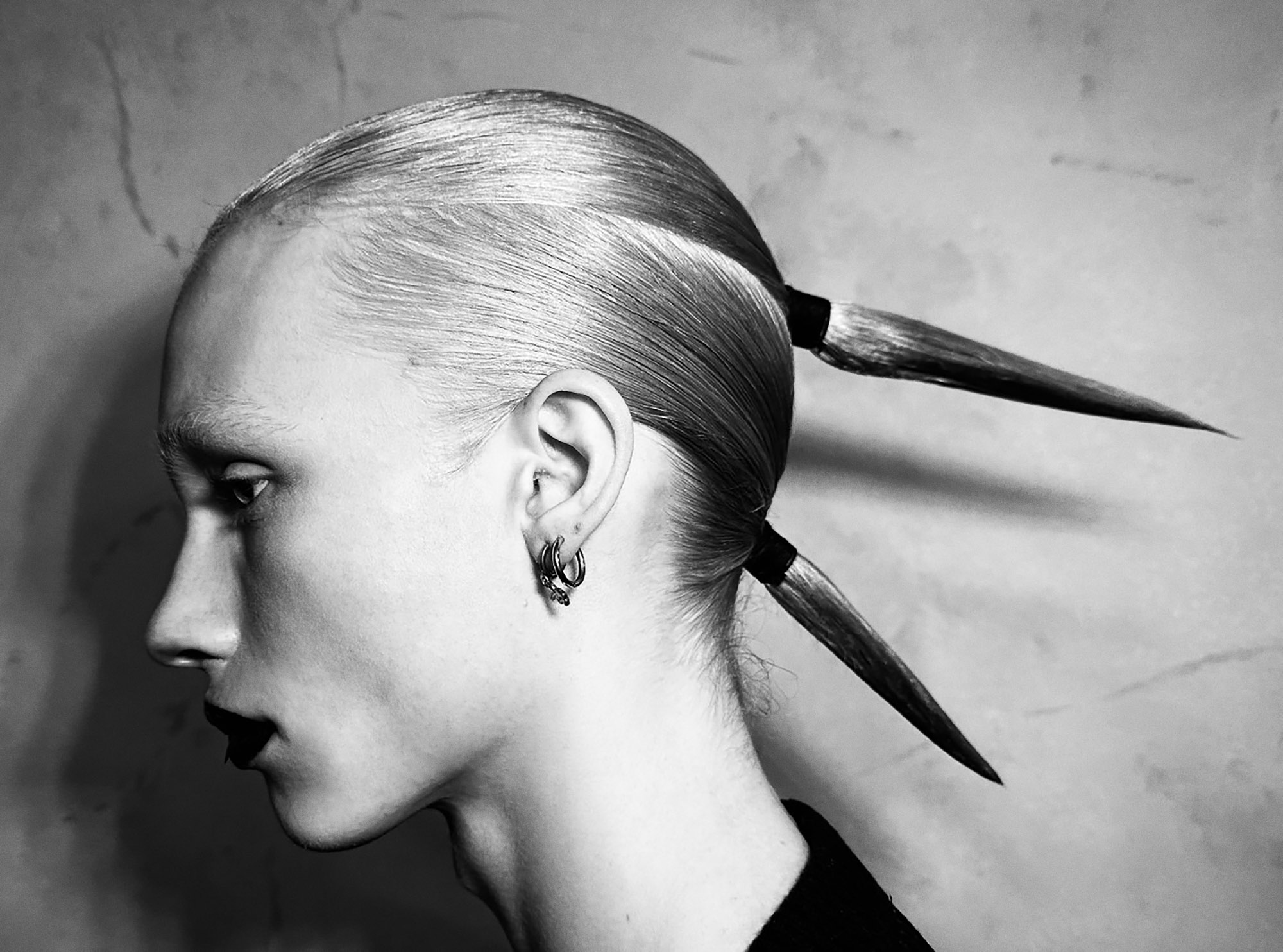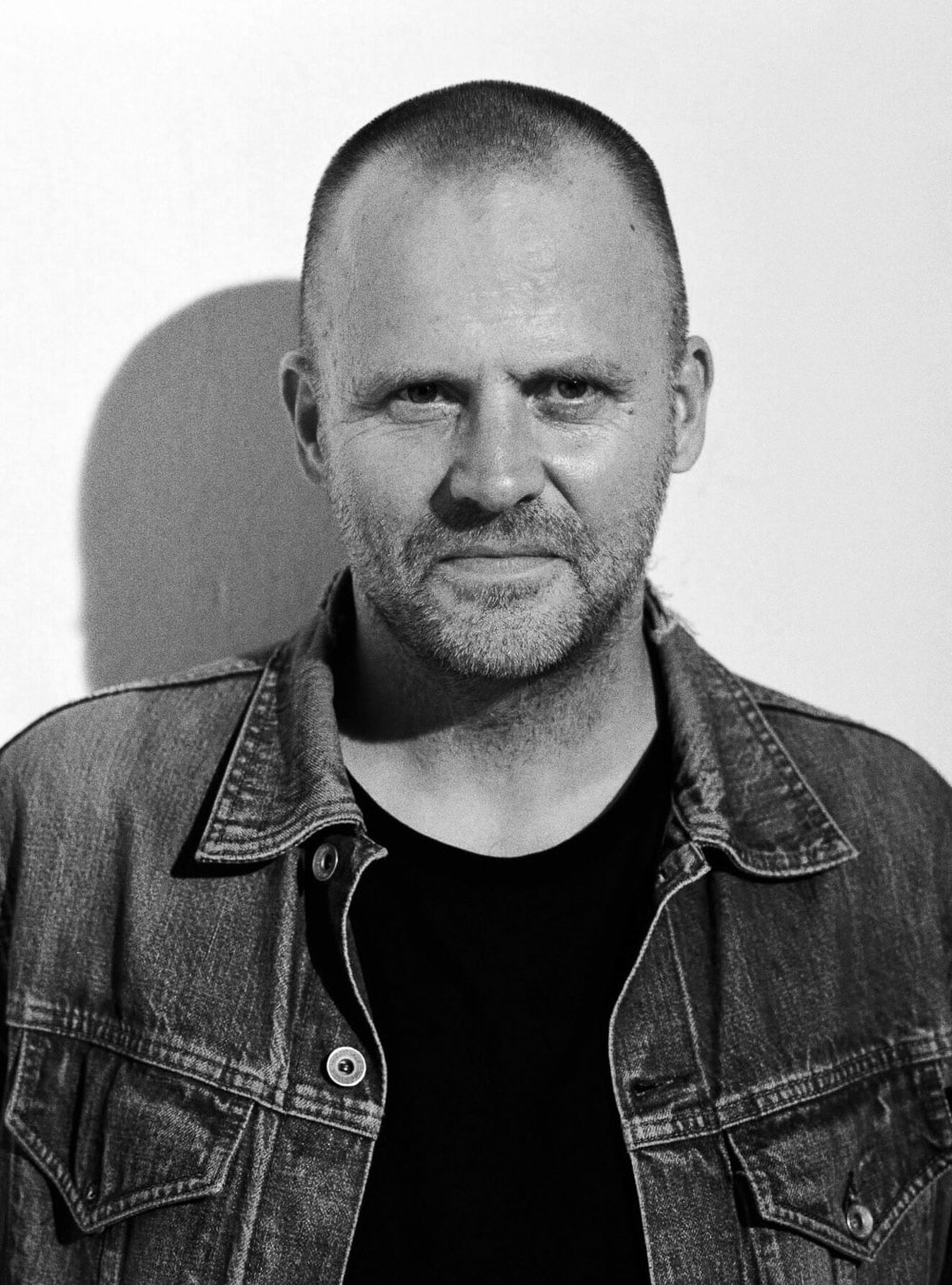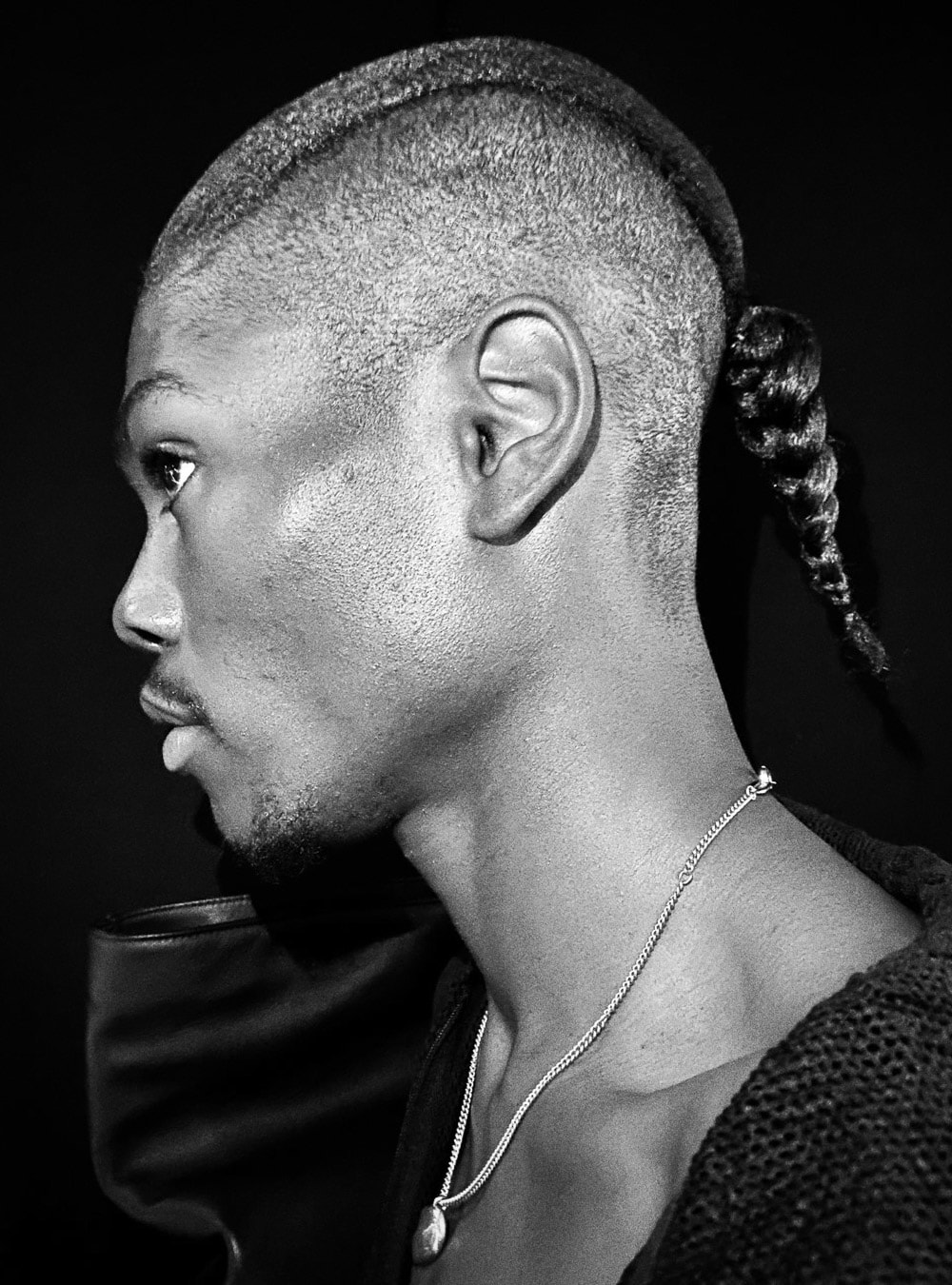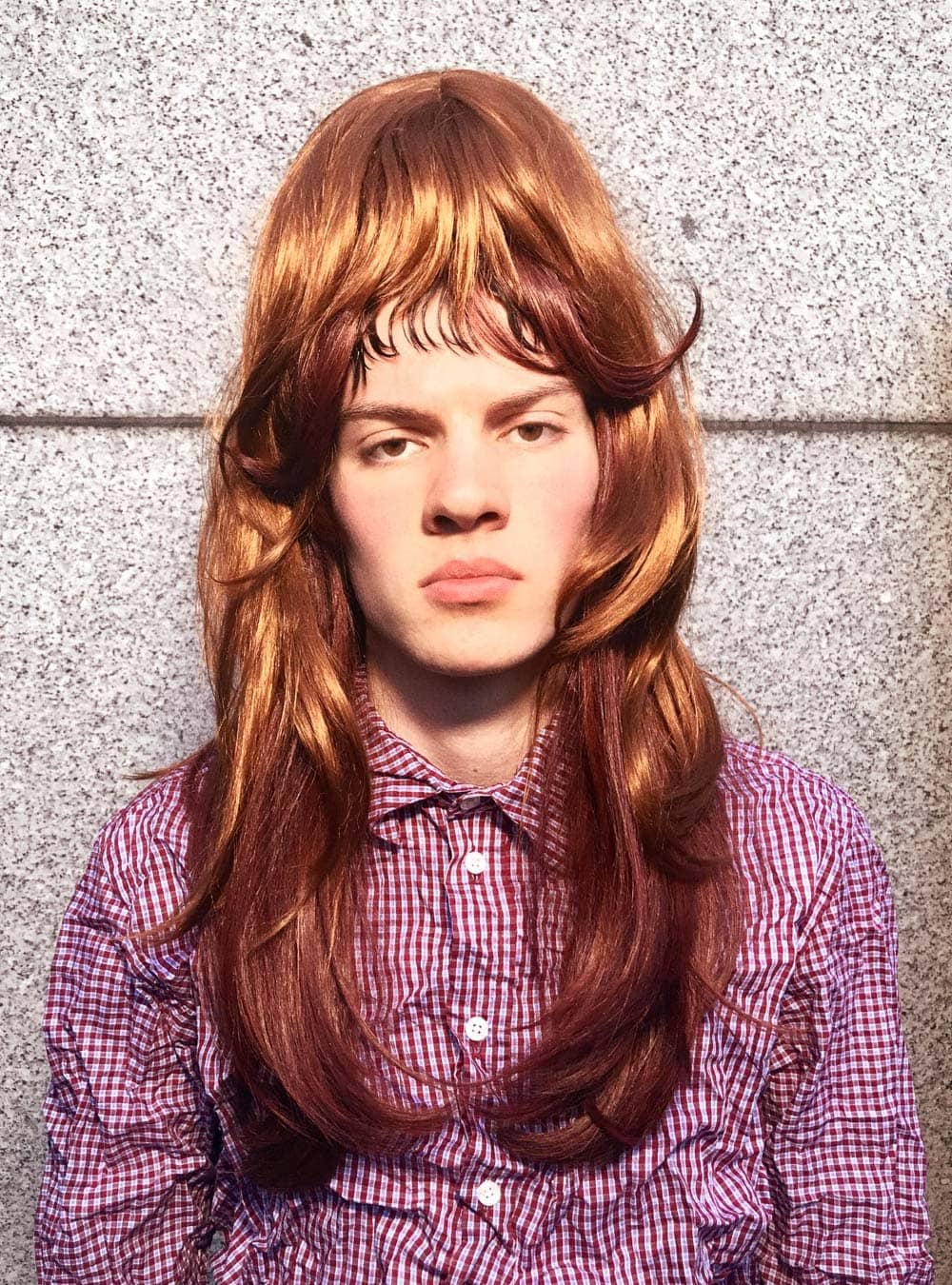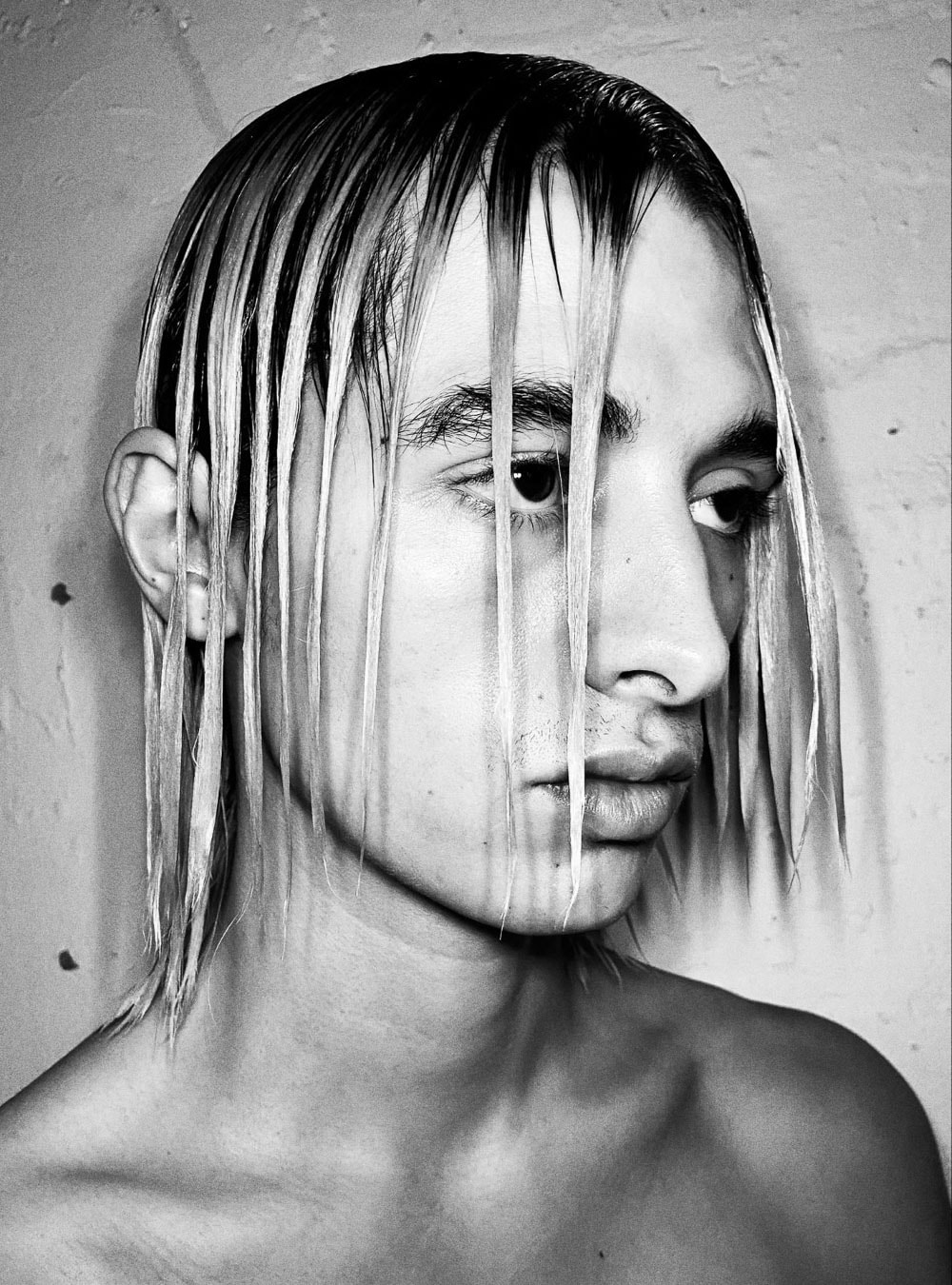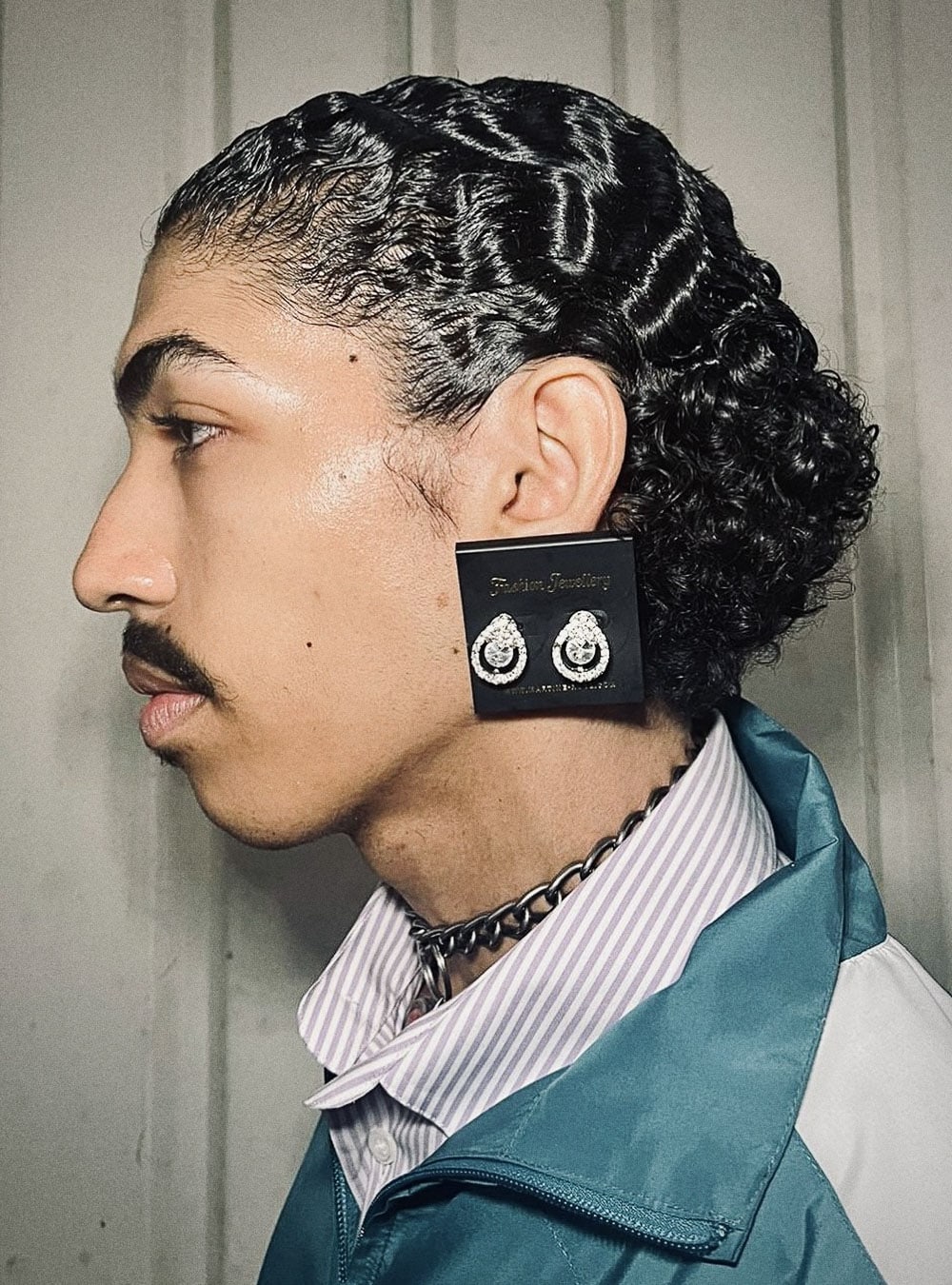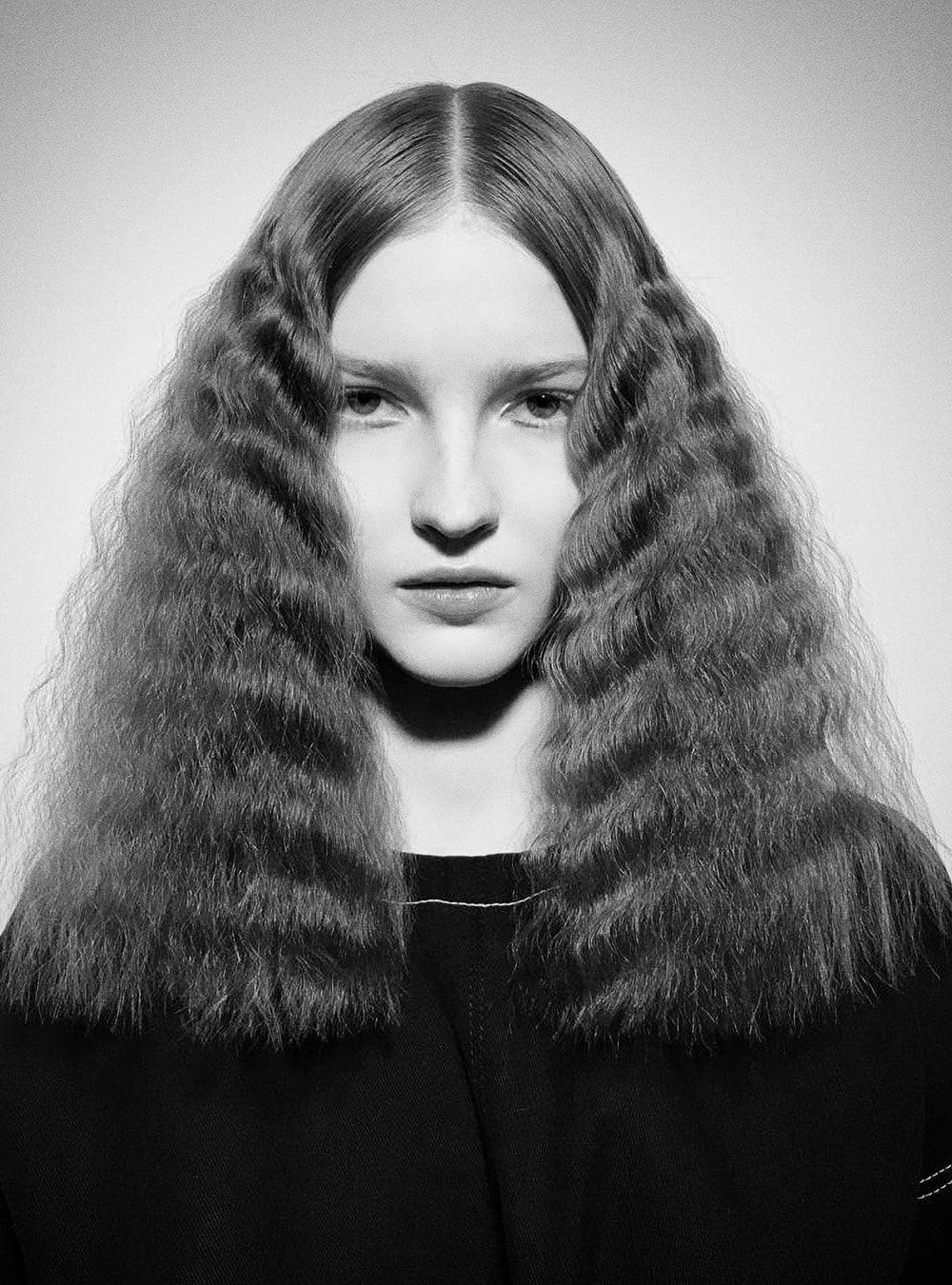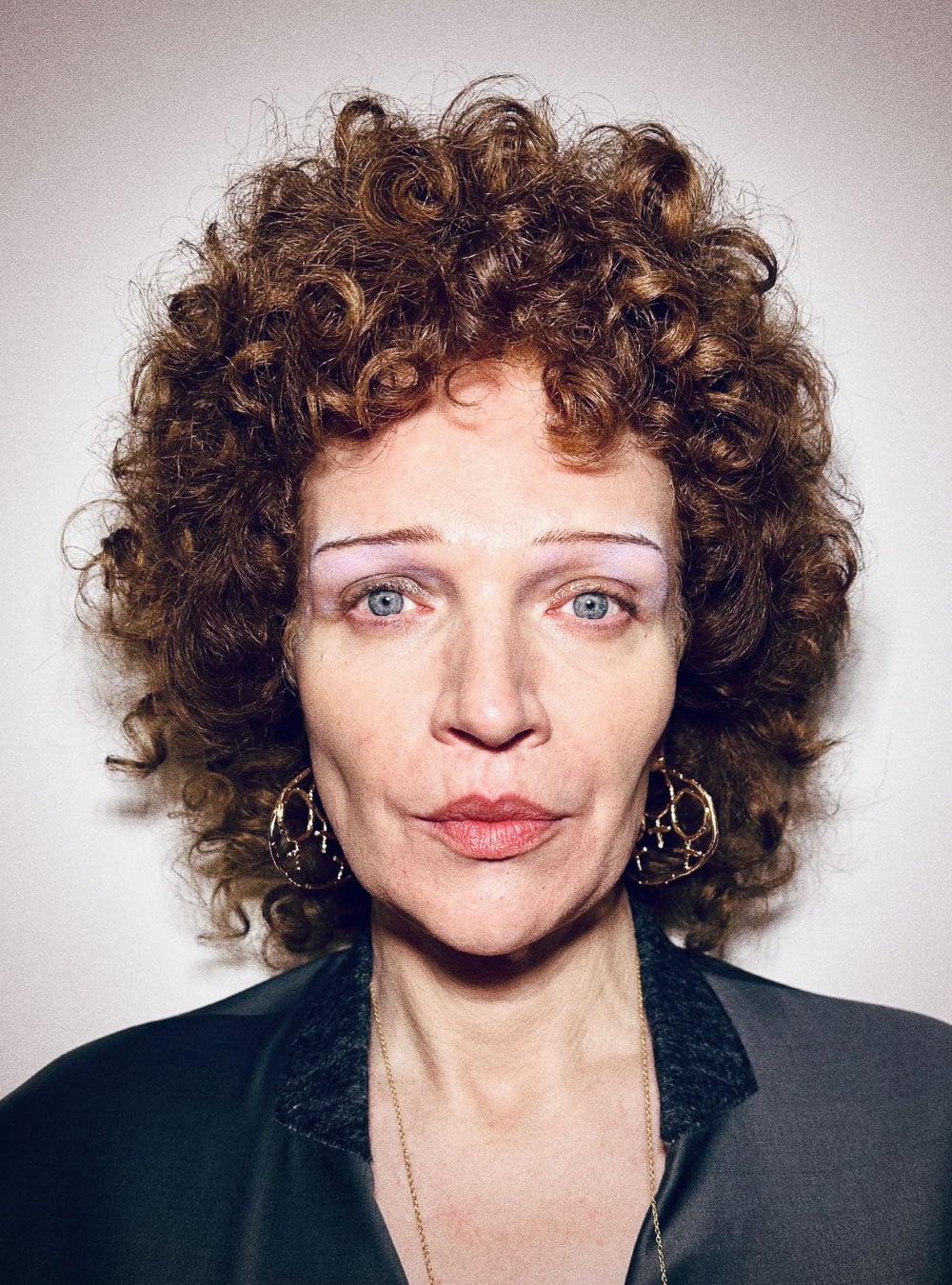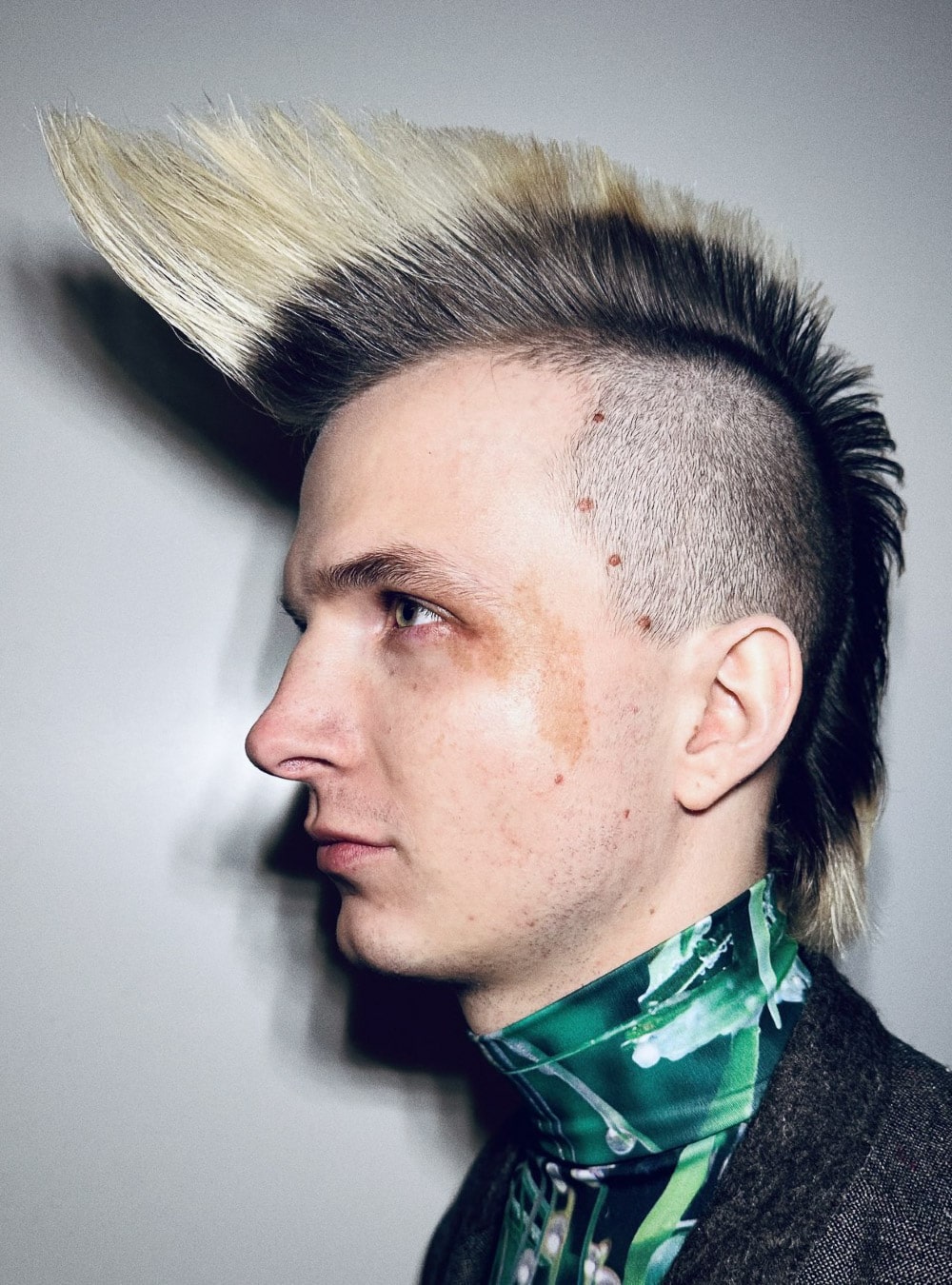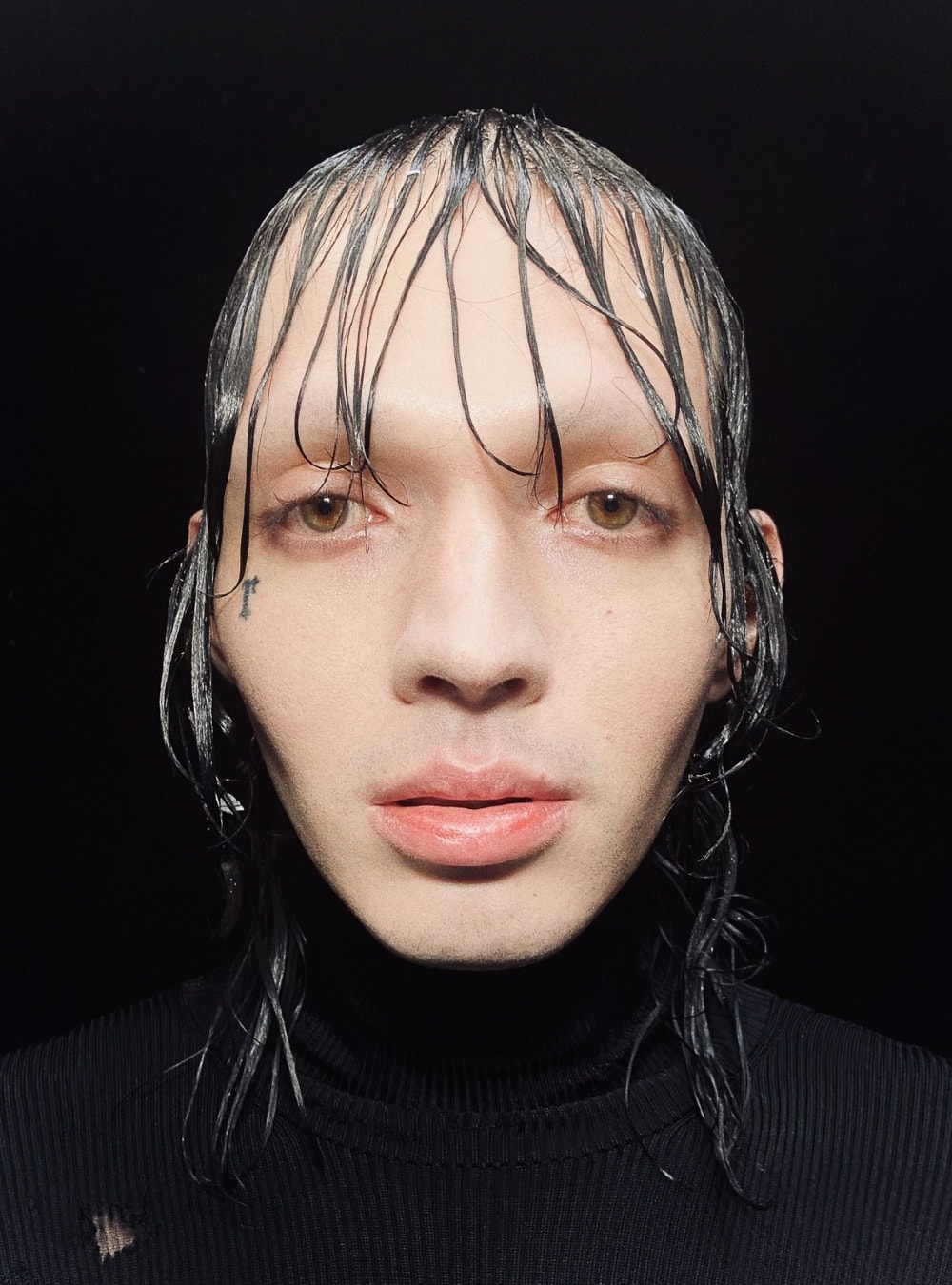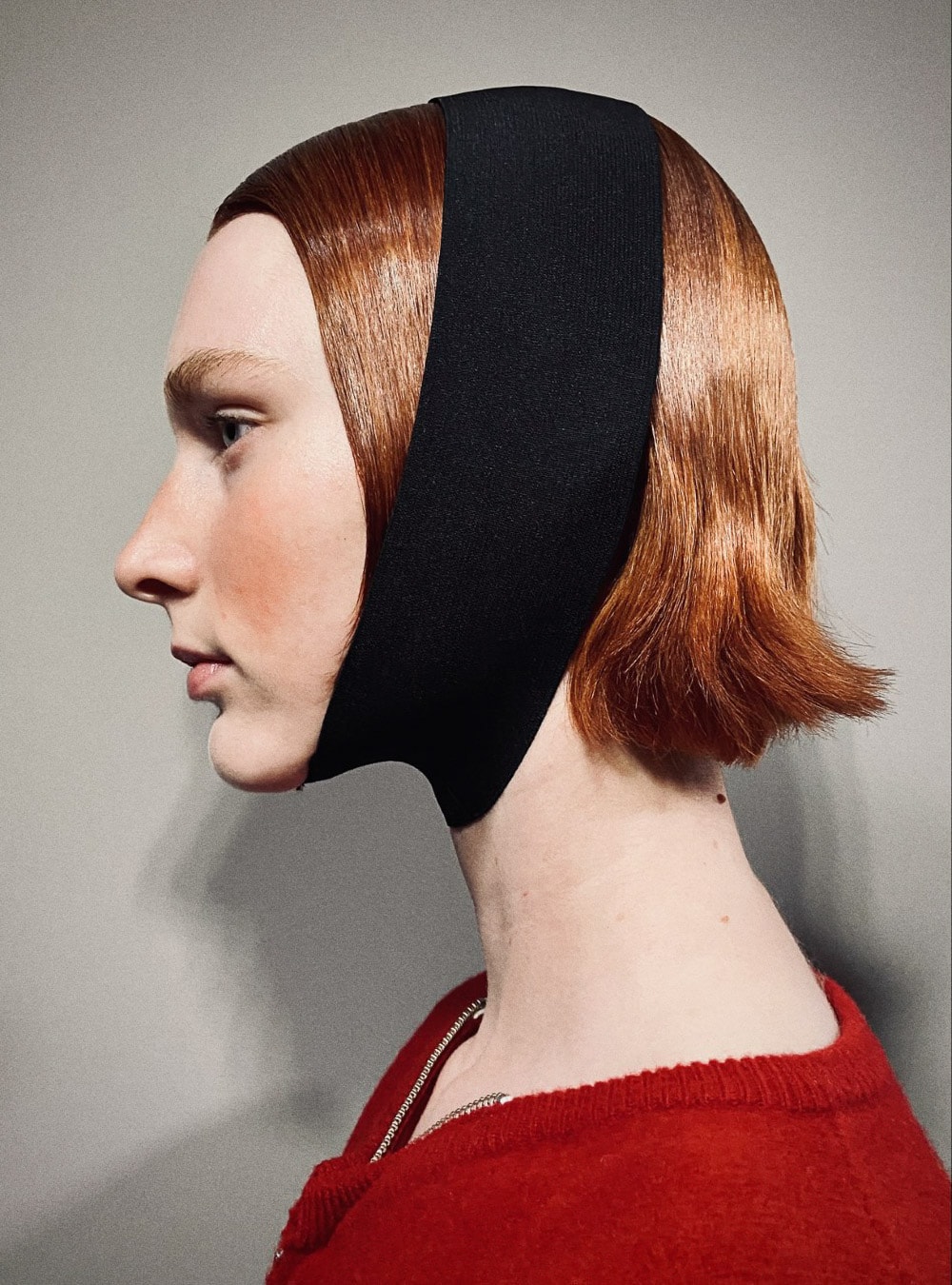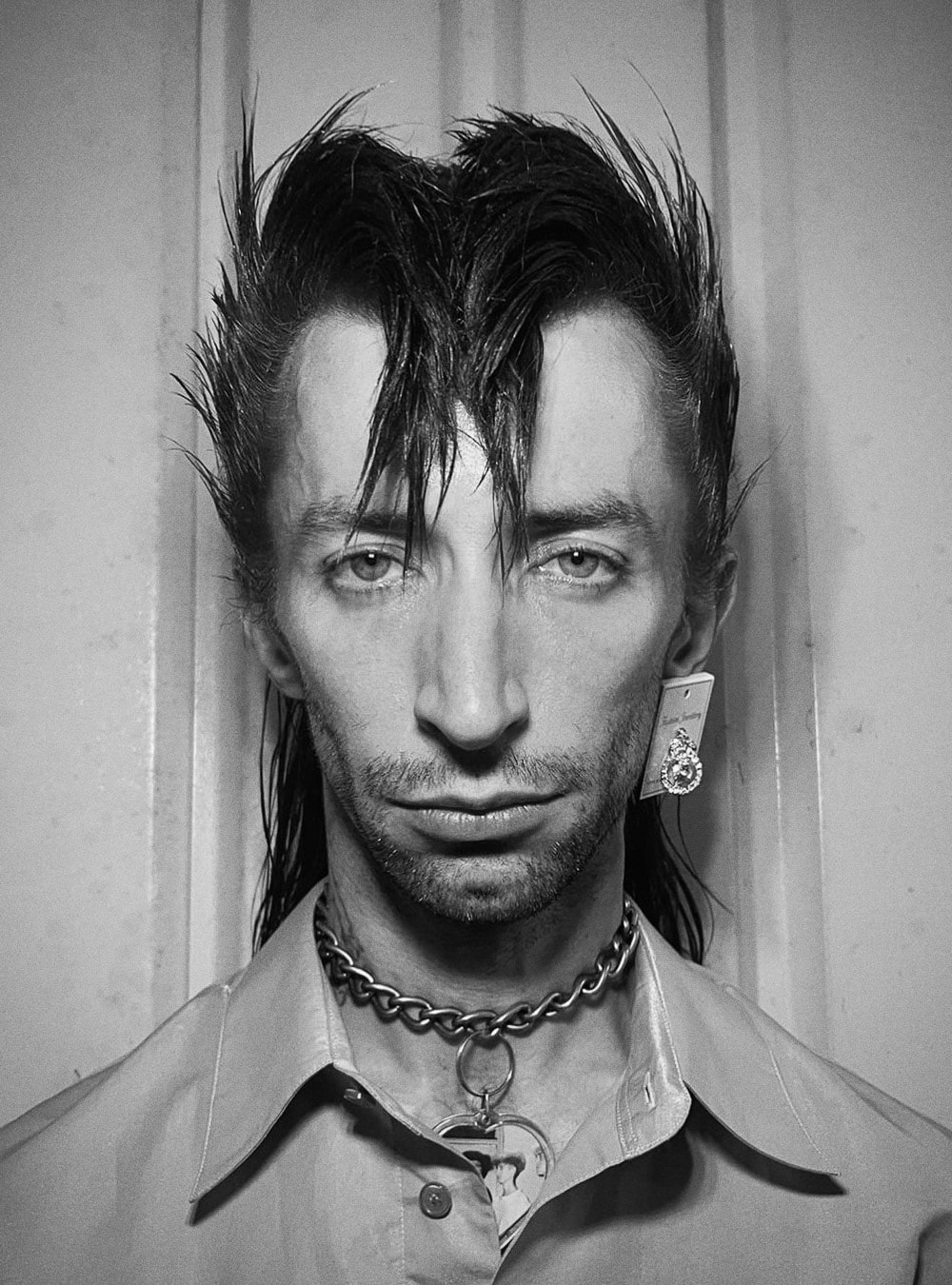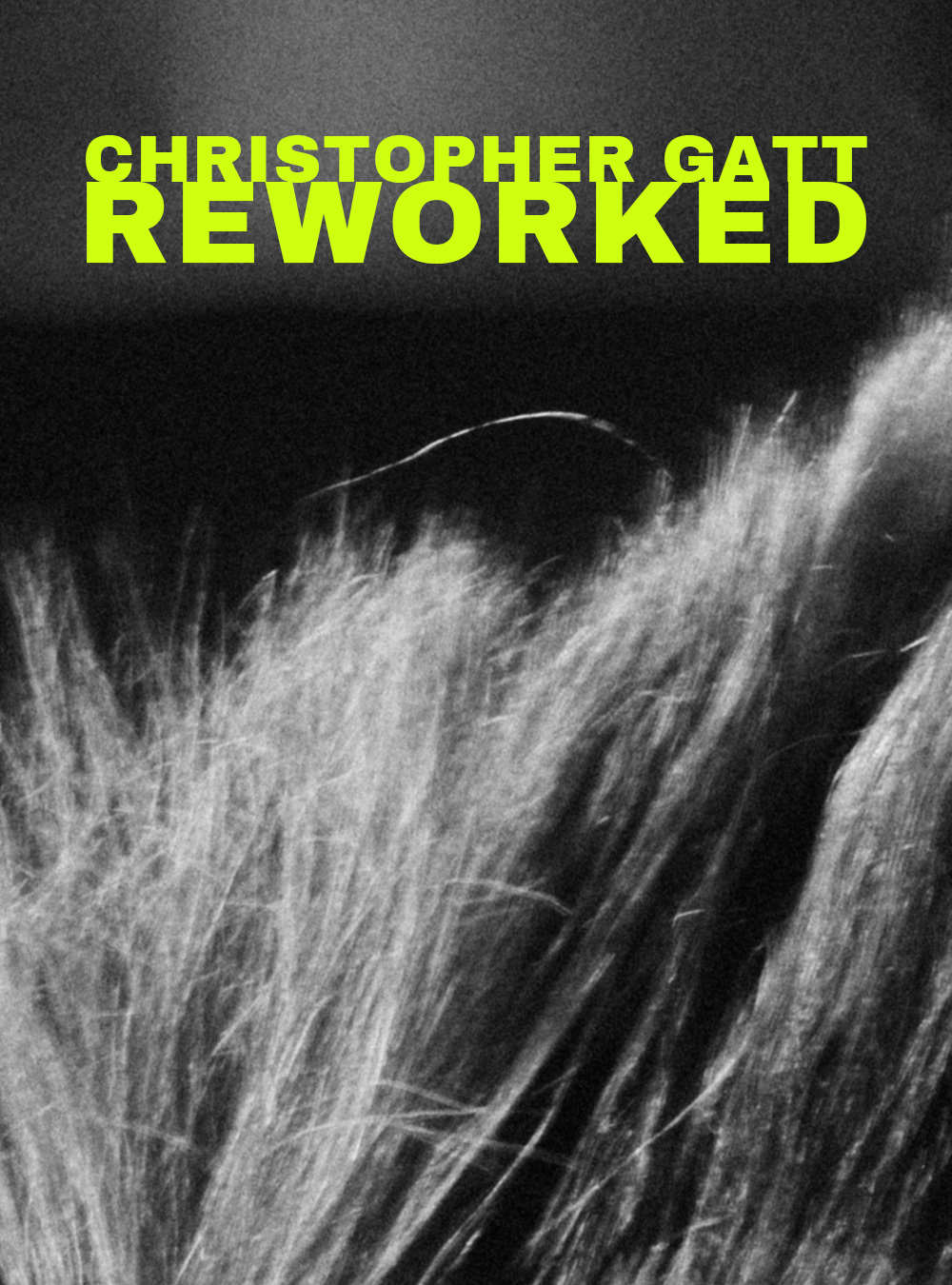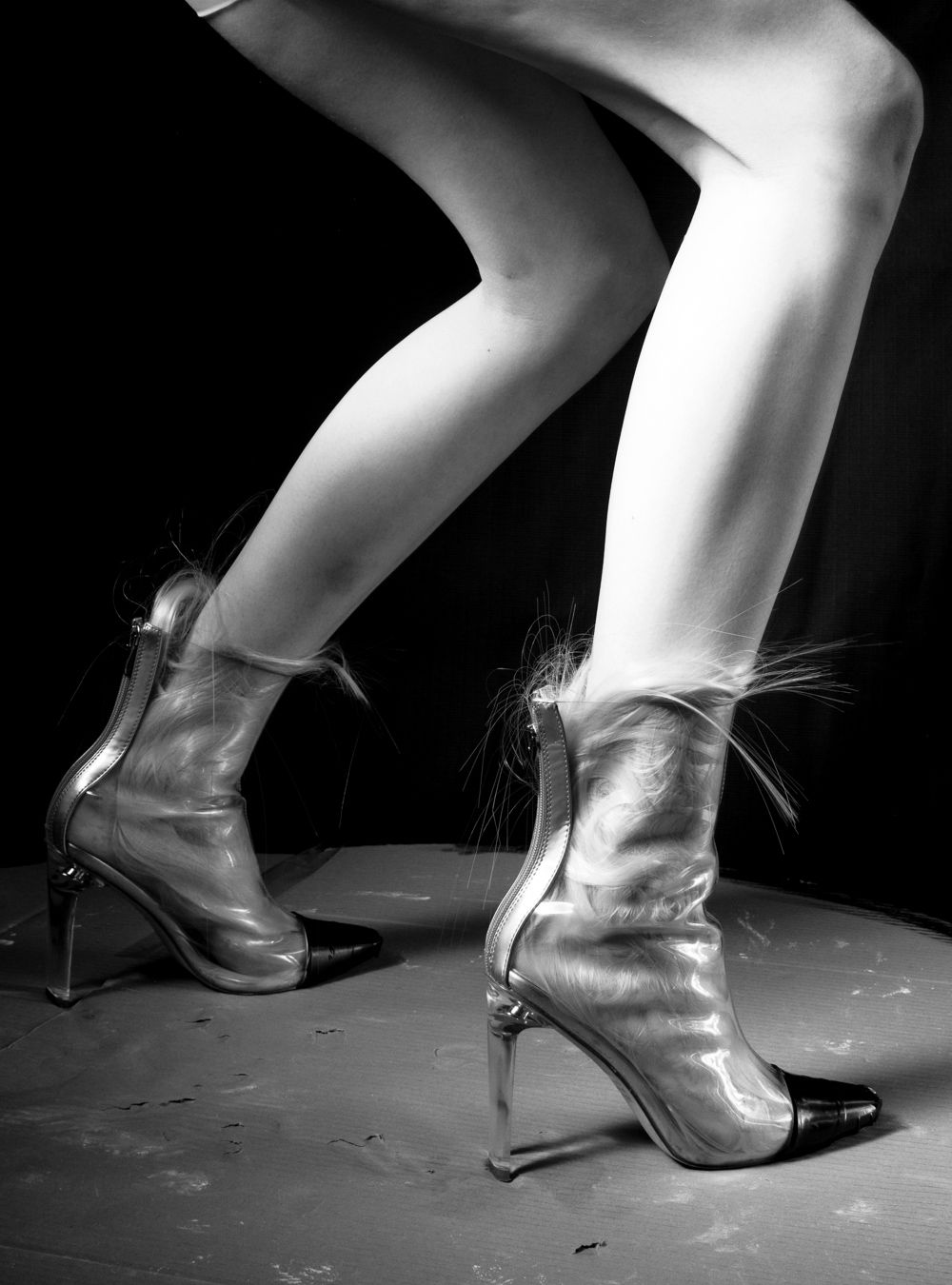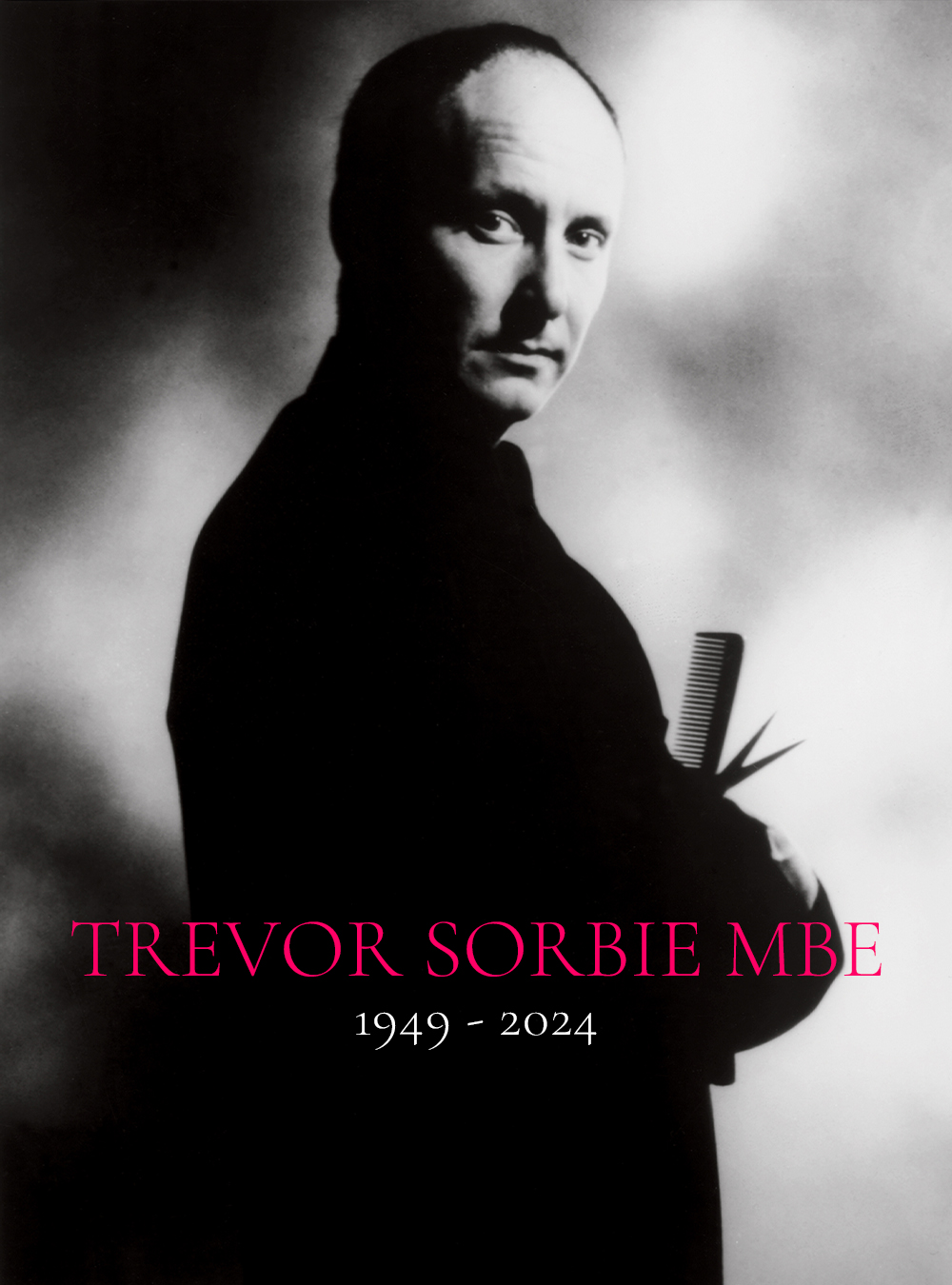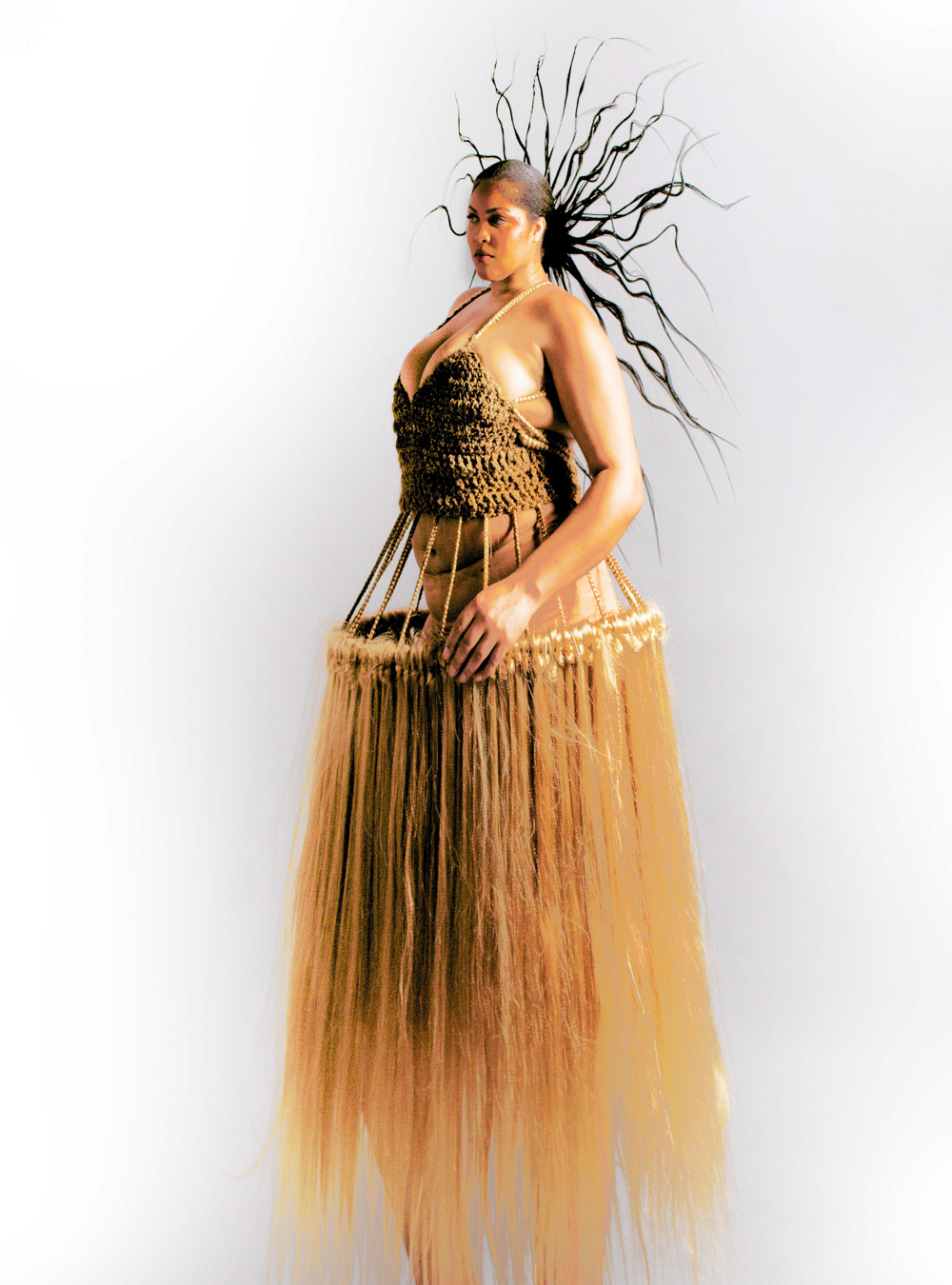PEOPLE: Gary Gill reflects on his journey through the upper echelons of hair and fashion in this exclusive interview with INFRINGE for Issue 4
Hair + Photography: Gary Gill
Interview: Katharina Lina
Meet Gary Gill, the troubled youth turned hair stylist behind some of the most provocative hair looks of the moment. His work for designers including Balenciaga, Diesel, Acne Studios, Y Project, Dries Van Noten and Martine Rose may hint stylistically at the past but blaze the most ultra-modern of trails. Gill’s hair is protest hair: anti-glamour, antiestablishment. He talks to INFRINGE about taking charge of your professional profile, why the post-punk era is important and the benefits of being older.
Tell us about your hair journey so far. How and when did you first get into hair? What attracted you and what made you want to stick around? It was the early 1980s, I was 17, at a complete dead end, in trouble with the police and in a gang that wasn’t a good influence in any shape or form. I needed a new path; my mum was a hairdresser and I had always been influenced by her in so many ways. I had also been attracted to what hair did and how it shaped youth culture. I got my first job in a salon in south west London and the minute I stepped through the door I knew I had arrived in the place I needed to be. Being a hairdresser has kept me on a forward path and it’s almost become a religion to a certain extent. I have stuck around because I have never felt I have done all there is to do.
Can you describe the zeitgeist? What was happening in the world at that time? What did people aspire to? Who were your role models? Where did you get inspiration from? What did you listen to? I guess the zeitgeist for me was a mood of what music did and how it shaped fashion. In the early 1980s, there was a hangover from punk and music was moving towards new wave. Music and fashion aligned in a way that doesn’t happen now. There was political unrest: a Tory government battling high unemployment, industrial action and a general feeling of disenfranchisement. There was still a DIY culture of making things yourself and that included hair – I suppose my whole career has been based on DIY hair. I was inspired by music, youth culture and the way people looked. In terms of role models, a whole host of bands and people who I hung out with inspired me. I don’t recall it being anyone particularly well known; there were older boys in my school in 6th form who were allowed to wear their own clothes and have their hair however they wanted. I would follow them during lunch break and observe them. Music wise, I was listening to The Damned, 999, The Stranglers, and a lot of reggae and dub. Also, later new wave music, early Soft Cell and Manchester bands like Gang of Four and Joy Division.
It’s evident that your past, especially music and style influences, inform your work now. Do you think that the past always feels fresh to each new generation and it’s their interpretation of it that makes it relevant again? I feel very positive about nostalgia. I was looking recently at some ‘zines by Cafe Royal Books from the 1970s – 1990s, an era when there was no social media. People were caught by surprise on camera and they always looked cool. Looking at old photos is really what got me into fashion, I guess. I like the honesty of things captured in the moment. I was lucky enough to work with Derek Ridgers, the British photographer who observed youth culture from the 1970s – that was a hero moment. More recently, I’ve been looking at a book by photographer Dave Swindells (Acid House As It Happened), about that scene. Acid House meant a lot to me – I was a DJ and had my own record labels at that time. People I work with constantly reference the past. It’s easy for me to revisit those styles because I have lived through those eras – they resonate with me; I can feel them strongly. Working with Demna at Vetements in the early days, he referenced a lot of these shapes and cuts. Because we did a street casting using non- models, we were allowed to cut and colour the hair but the fact that it was on real people – fresh faces and bodies, and not models is what made it contemporary and relevant.
How do you choose your team and the people you work with? What qualities do you need around you? Have you developed a set of criteria for spotting a good fit over the years? Choosing my team has become such a big part of what I do and a very important part of how I create. The main quality is attitude, another is taste, also a good work ethic, stamina and that ability to keep going when everything seems impossible. As far as skill with hair is concerned, that’s an important quality, however, that can be taught, so an overall right attitude is one of the main things and also the desire to be open and learn. My team are everything; I’m nothing without them.
You’ve previously mentioned that avoiding new methods does not equate to authenticity. Can you elaborate on how you evolve and experiment while remaining true to your vision? It’s a case of breaking things down and figuring out ways of doing new techniques. I have said before that people focus so much on technique and learned technique instead of the idea and then figuring a way to realise that idea. Good technique doesn’t always equate to great hair; ideas create authenticity and interesting new ways. I find that if I focus too much on technique I get boxed in. I learned the formulaic ‘Sassoon’ way where you spend time thinking and not ‘feeling’, reflecting on the technique and not the idea – the idea has to come first. You find new ways of doing things – you live dangerously when you work like that – it’s more exciting.
What are some current favourites, or new techniques you are exploring? I don’t have any current favourites – it evolves on a daily basis and with every job. We have been working with quite wet textures recently; we are revisiting dry textures but trying to create a different dryness. We are also working on new blow dry techniques, slightly vintage with a contemporary feel. One of my stylistic signatures is reduced bulk and volume in the hair – it’s an anti-glamour thing – using product, technique and tools to achieve that.
What elements of the hair and beauty industry do you think are in need of evolving? Education: I’m worried that not enough people are going into the industry. Hair and beauty salons are closing and people are working from studios or at home so there won’t be the opportunity for people to receive a high level of education in the salon. We need to consider how we create education at grass roots level. I’ve accumulated a lot of knowledge during my time in the industry. I had my own salon for nearly 20 years, I’ve consulted for hair brands. In that time, I made a lot of mistakes and learned from them. It’s important to transfer all that business and leadership knowledge and expose my creative influences to the next generation. I’m very pro their point of view: I spend time mentoring people on my team and outside my team, in an informal way. I didn’t start session work until I was 40 – I was a bit late to the game but wouldn’t have been able to do it when I was younger – it would have eaten me up. I found myself assisting people younger than me – it’s very freeing to be an assistant at 40! So I fumbled around a bit but because I was older, I had a very distinctive point of view and was very clear about what I didn’t want to do. The hardest thing to learn when you’re young and enthusiastic is to turn down work that is not right for you. Choosing the right jobs helps you keep a strong narrative and reinforces people’s idea of you and your work. It’s important to retain a sense of self: it’s not about snobbery or being a smartarse, it’s investing in your future. I’m quite choosy about what I do and how I’m made to do it because I realise it’s my legacy and how I want my work to be represented is down to me.
To what extent do beauty industry workers have a responsibility in shaping beauty ideals? I feel very strongly that we have to move away from celebrity culture, these people are holding up the wrong ideals and making this perfection in beauty unhealthy. I’m very anti glamour; I find social media overused and tv shows like Glow Up and The Big Blow Out make us look like idiots. We live in a culture of judgment and comparison which I don’t like. I’m having a documentary made about me and my career, we’ve been filming for 18 months. I was a bit reluctant to begin with but there needs to be some more balanced representation of what we do and the importance of the industry, rather than everything amped up and glamourised.
Fashion is arguably one of the most difficult and elitist spaces to break into. What keeps you grounded? Remembering were I come from, where it all started, not taking myself too seriously, really remembering that we are not saving lives and working with good people.
Your work looks to be equally balanced between men’s and women’s and there’s a strong androgynous overtone to it. To what extent do you think that gender stereotypes are irrelevant when it comes to contemporary hair styles? I’ve always been fascinated by androgyny – boys who look like girls, girls who look like boys. It’s a recurring theme in my work – it’s instinctive, it just happens – but the idea seems almost mainstream now to the point that it’s barely questioned. Tell us about your BTS photos. Why and how did you start taking your own photos? I just never got what I wanted from backstage photographers. I knew I needed content and a 360 view of some of the shapes that I created; so much is missed on the runway. When I started doing my own pictures backstage and to reference my work I found I had very little time to take them due to the volume I needed and various problems of containing people in a space, so I developed a quick and simple set-up that then created its own aesthetic that people seem to be attracted to.
We’re always interested in exploring the authorship of hair. In the creative industries, the photographer owns all copyright to images even if they contain the creative work of hairstylists, makeup artists, etc. Was it a conscious move to document your own work to maintain a level of creative and legal authorship over your work? To a certain extent, yes, I wanted more control. It’s hard to get permission to publish outside of what the picture was intended for when someone else has taken the shot. With so much outside interest in my work and pictures it gave me the freedom to do what I wanted with them and use them to really promote my work. One day I’m hoping to do a book: it’s a dream of mine to catalogue my career using my own images.
Your photos have a distinct aesthetic to them which lends itself beautifully to a unified online presence. How do you feel about social media in a professional scope? Do you ever feel the pressures of keeping up on social media? Social media is a mine field: I have a love hate relationship with it, to a certain extent it made my career but I have always wanted to keep it professional and as a tool for promotion and exposure on my own terms. I think like all things it has pros and cons: I do feel pressure to keep sharing content but I don’t in the big scheme of things care too much if people like things; as long as I like it then I’m happy.
Do you have a favourite ever hair job that you’ve done? My Beauty Papers Metamorphosis shoot series was one of my favourites. Show wise, my early Vetements shows and now Balenciaga and Martine Rose shows: the process of preparation for these shows gives me space and time to delve into the recesses of my creative mind.
Favourite hair era? This is hard, but I guess the ones that have influenced my career the most are 1970s and 1980s.
In your opinion, what hairstyle or trend is underrated / deserves more love? The Perm: I’m working to re-launch it in an ironic way, but like the mullet, I’m hoping it will become a trend again.
Do you have any facts about yourself or your job that would surprise people? I love football and gardening. I worked as a make-up artist at quite a high level for a few years.
We’re kind of at a strange time, post-Covid, with rising living costs, climate change, the recession and the increasing proximity of war. How do you think these things could affect the way people consume beauty and fashion? I suppose as always there will be a reaction to these world events, maybe things will become more stripped back, a lot more real and hopefully people will realise what is really important in life. I personally find it hard to make sense of beauty and fashion in comparison to these things. I have a bit of a cut-off and to be really honest I don’t care enough about fashion or beauty in this context. I just hope brands and key figures in the industry don’t forget about what’s happening and use their power, privilege and wealth to do good things to help and create awareness.
Through it all, what invigorates you? Professionally, having freedom within my job to create new shapes/styles and push boundaries with things that haven’t been seen before. Personally, spending time with my family and friends, being by the sea and spending time in my garden. I love music too, so having time to immerse myself in that.
- ANTHROPOLOGY OF HAIR
- ANTHROPOLOGY OF HAIR
- ANTHROPOLOGY OF HAIR
- ANTHROPOLOGY OF HAIR
- ANTHROPOLOGY OF HAIR
